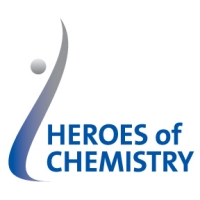Dow Electronic Materials
Dow Receives Prestigious “Heroes of Chemistry” Award
Critical Enabling Technology Advanced the Modern Microchip

The American Chemical Society has recognized Dow Electronic Materials for its development of Dow AR™ Fast Etch Organic Bottom Antireflectant Coatings (BARCs), which enable high resolution microlithography in the manufacture of advanced integrated circuits. Successfully proven in multiple generations of high-volume semiconductor manufacturing, this advanced technology has enabled the industry to reliably print the thousands of tiny circuit lines needed for mass production of the modern microchip.
With Moore’s Law progressing and the need to scale to next generation nodes, Dow’s development delivered the attributes necessary to produce advanced integrated circuits at high throughput with good electrical performance and in high yield. Dow AR™ Fast Etch Organic BARCs continue to deliver benefit to the industry today.
Dow is very proud of the scientists who contributed to this pioneering discovery, and together with our customers, we can play an enabling role in the technology of today and tomorrow.
Learn more about Dow AR™ Fast Etch Organic BARCs
Questions & Answers about Dow AR™ Fast Etch Organic BARCs
Bottom antireflectants are used to control optical reflection in the imaging film. They address the challenges caused by the optical physics of light coming through thin photoresist films. In the wafer patterning process, the light from the exposure tool is reflected back from the wafer surface into the photo resist materials,and the circuit pattern features cannot be accurately placed.
Bottom antireflectants improve the photoresist profile and reduce the line width variation caused by scattering and reflecting light. Without bottom antireflectants, a simple photoresist could not reliably produce advanced chips. With more than 2000 circuit lines in the width of one human hair, there is little room for error.
Lithography and the use of the photoresist is an essential and critical step in etching the thousands of tiny lines that eventually contain and store information on a microchip. Dow scientists determined that too much photoresist film thickness was being lost in the BARC etch removal process, which was decreasing microchip yield and electrical performance.
The development of Dow AR™ Fast Etch Organic BARCs delivered all the key attributes needed to preserve the fidelity of the fragile photoresist and improve pattern transfer onto the chip. This development enabled the the industry to deliver high volume semiconductor manufacturing across multiple technology nodes - with good electrical performance and in high yield.
Dow AR™ Fast Etch Organic BARCs will be used for advanced lithography, including next generation technologies like EUV. Dow is constantly innovating its platform of fast etch oBARC materials to ensure its extendibility and performance in advanced manufacturing nodes.
Dow’s Heroes of Chemistry
Dow is proud to recognize the Heroes of Chemistry who have each played a pivotal role in delivering the principal invention for Dow AR™ Fast Etch Organic BARCs.
Dow also congratulates those who were with Dow at the time of Discovery:
- Tim Adams
- Ed Pavelcheck
- Gerald Wayton
- Jeong Yun Yu
- Anthony Zampini
Related Links
About the "Heroes of Chemistry" Award
Since 1996, the ACS Heroes of Chemistry program has recognized chemical scientists whose work in various fields of chemistry and chemical engineering has led to the successful innovation and development of commercial products based on chemistry. The Heroes program also highlights the vital role of industrial chemical scientists and their companies in improving human welfare through successful commercial innovations and products. It presents an ideal opportunity to enhance the public image of the chemical and allied industries.
Learn about ACS Recognizing our Heroes of Chemistry.






